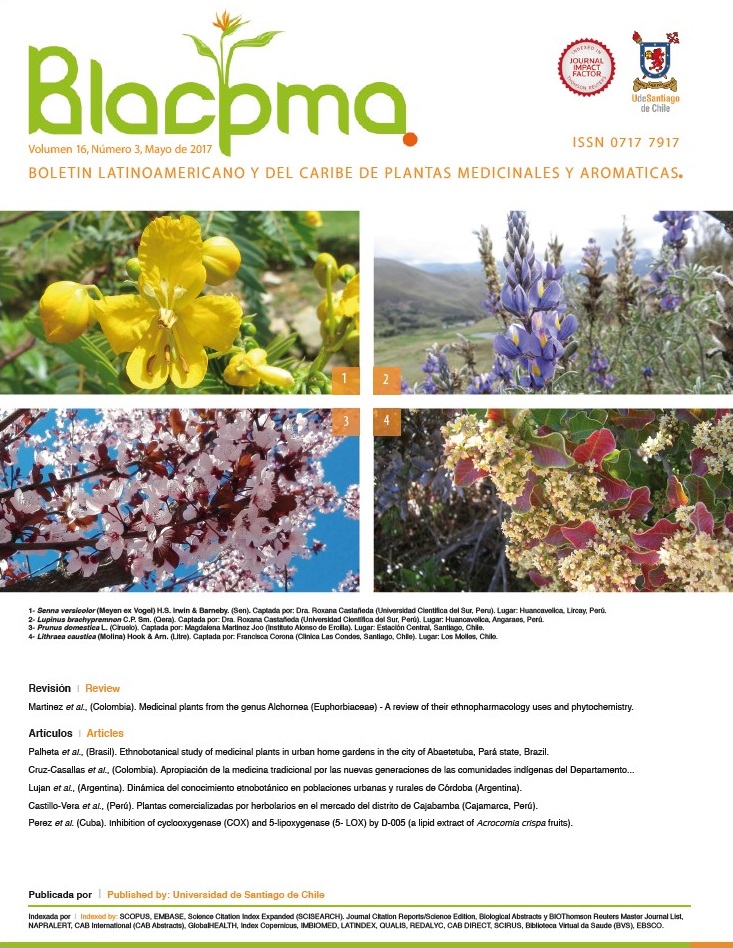Dynamics of ethnobotanical knowledge in urban and rural populations of Córdoba (Argentina)
Keywords:
Neorurality, Ethnomedicine, Social actors, RurbanizationAbstract
This work aims at analyzing, comparatively, specialized medical ethnobotanical knowledge of urban and rural populations of Córdoba. Hence, medicinal species were documented; through a qualitative and quantitative analysis, certain peculiarities, continuities and divergences were identified in relation to ethnomedical practices and species used in three contexts: Sierras Grandes, Sierras Chicas and Urban Area. We adopted ethnobotanical methodologies and compared numerical data by similarity index and multivariate methods. Greater similarity was found between the Urban Area and that of Sierras Grandes in terms of both ethnomedicine and species composition (Similarity Index S=0.65, 159 out of 436 species matched). A larger difference was found in relation to the area of Sierras Chicas. Correspondence Analysis allowed determining groups of species and health areas according to the profile of the different actors and areas. Results show the influence of the "neorurality" phenomenon and processes of 'rurbanization' (associated with migration from the city to the countryside) and the influence of alternative medicine on traditional knowledge.
Downloads
Downloads
Published
How to Cite
Issue
Section
License

This work is licensed under a Creative Commons Attribution-NonCommercial-NoDerivatives 4.0 International License.

